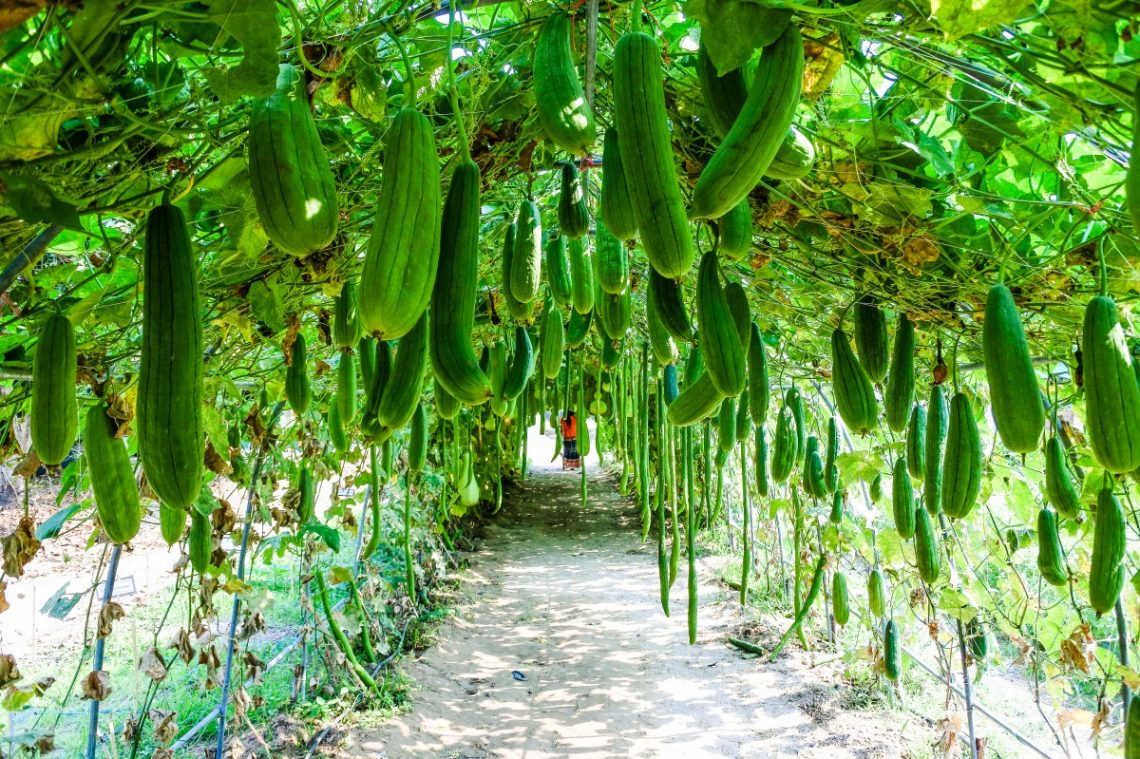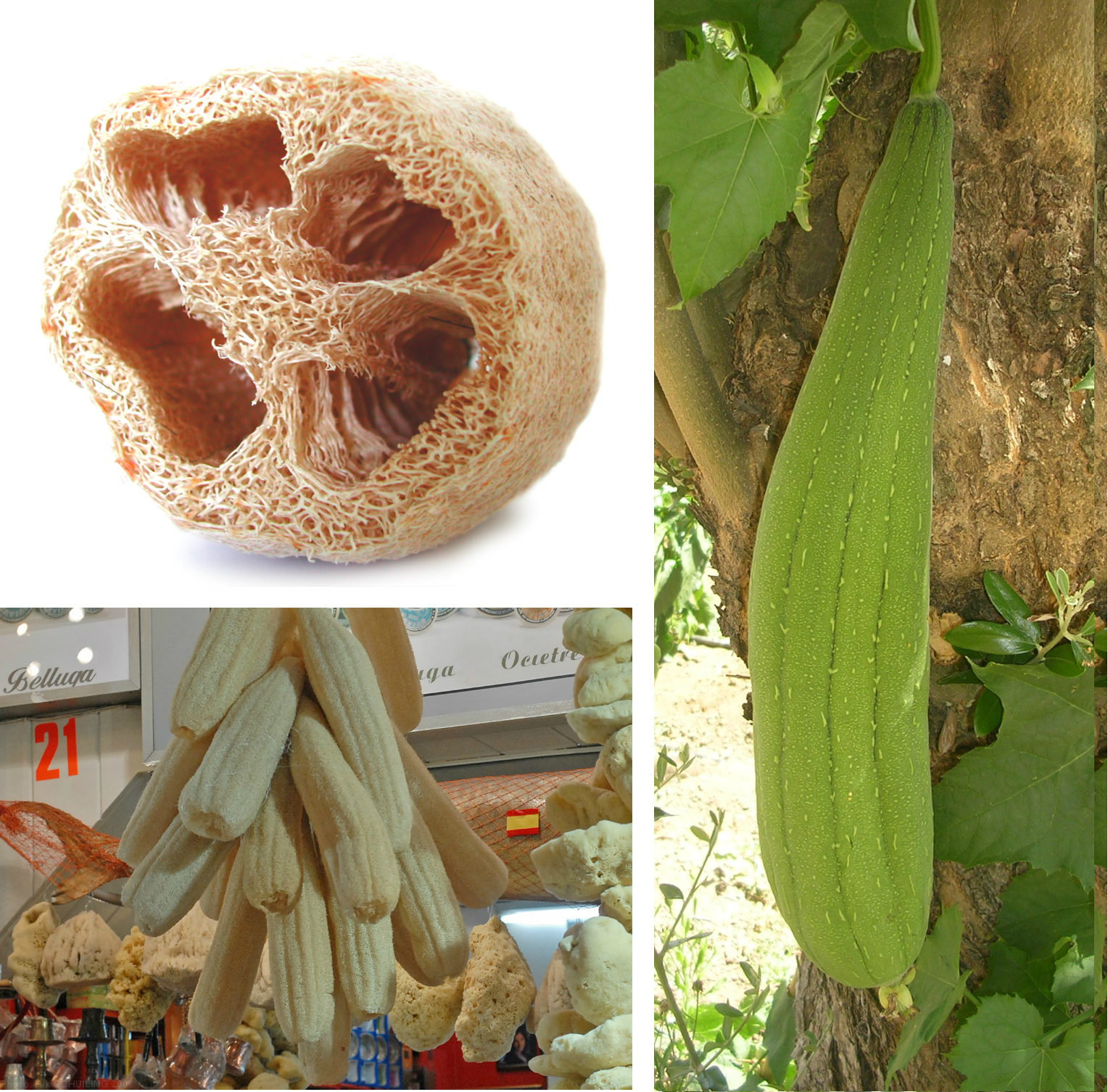
Dr. Lew Feldman, Garden Director
Luffa sponges come from plants, instead of our default notion that sponges are animals. Luffas represent the fibrous interiors of fruits of the gourd-producing plant, Luffa aegyptiaca, a tropical member of the Cucurbitaceae that grows as an annual vine, as pictured below.
When harvested at a young stage Luffa fruits are edible and especially popular in India, China, and Vietnam where they are typically steamed or pan-fried. However, when the fruits are allowed to mature and dry out, they develop a hard shell surrounding a stiff, dense network of cellulose fibers (technically, xylem fibers) that make up the body of the fruit and give the fruit its cucumber-like shape.
 Up until World War II Luffa sponges were the most popular sponge in the United States, with most being imported from Japan, a circumstance which ended as a result of the war.
Up until World War II Luffa sponges were the most popular sponge in the United States, with most being imported from Japan, a circumstance which ended as a result of the war.
Most of us know that the Luffa sponge is used as a body scrub, but this versatile gourd has been used to make soundproof wall boarding, to insulate army helmets, to stuff mattresses and saddles and even to make filters for steam engines and diesel motors! One of the attractions of the Luffa sponge is that when it is no longer useful it can be composted and biodegraded. Lately, too, there has been some controversy about whether it can harbor potentially harmful microbes, leading some to recommend against using Luffa sponges to scrub one’s skin.
